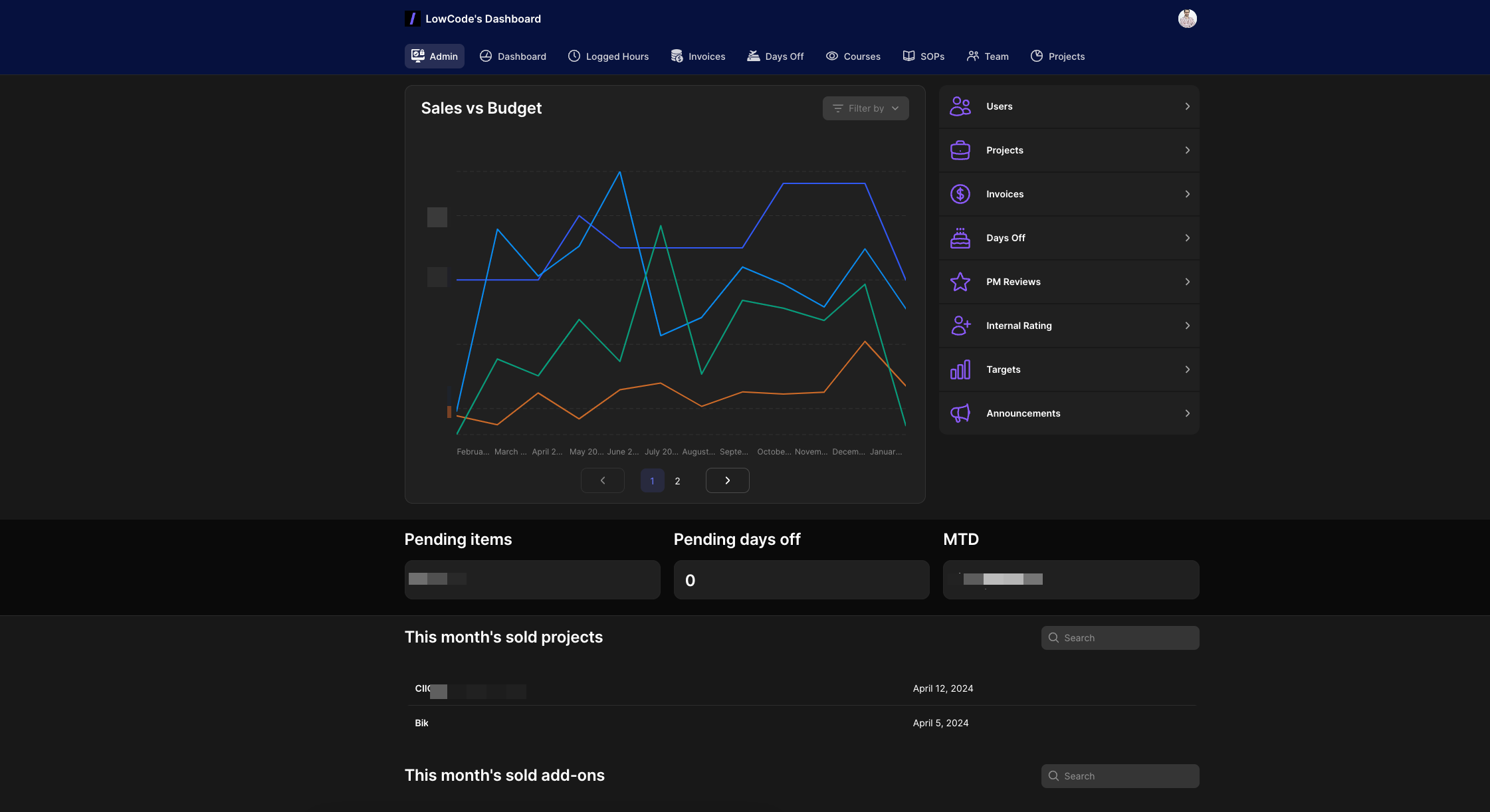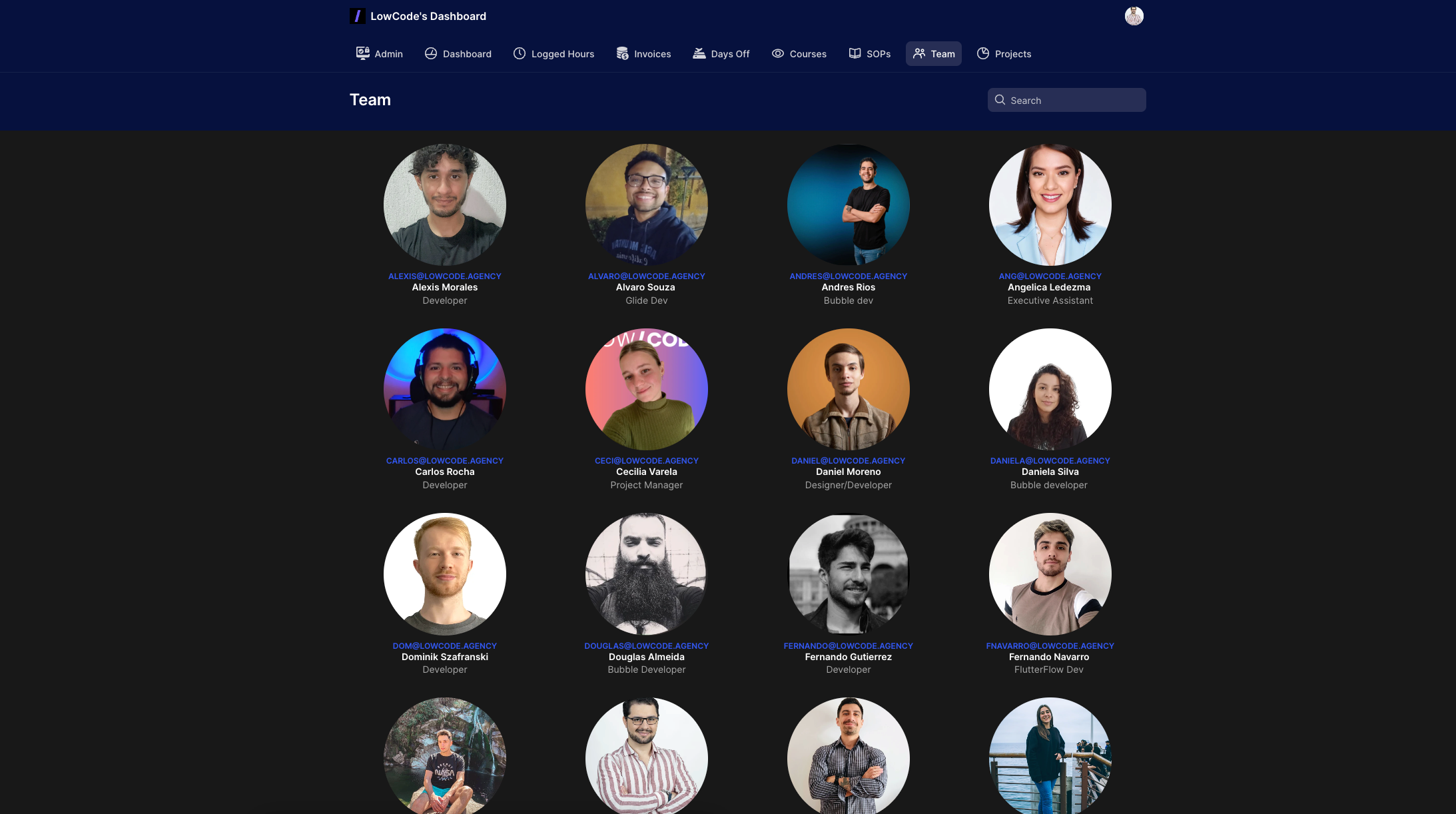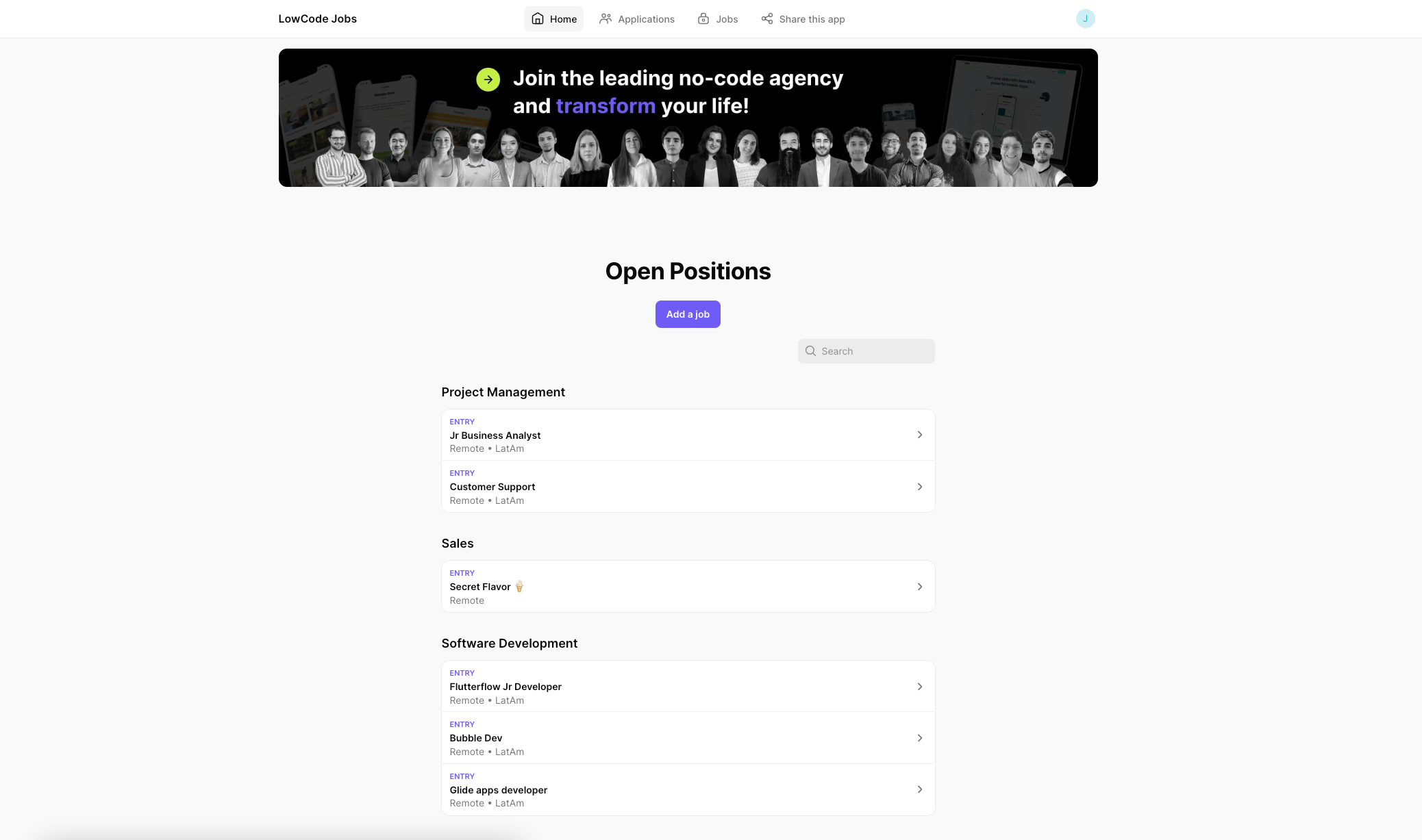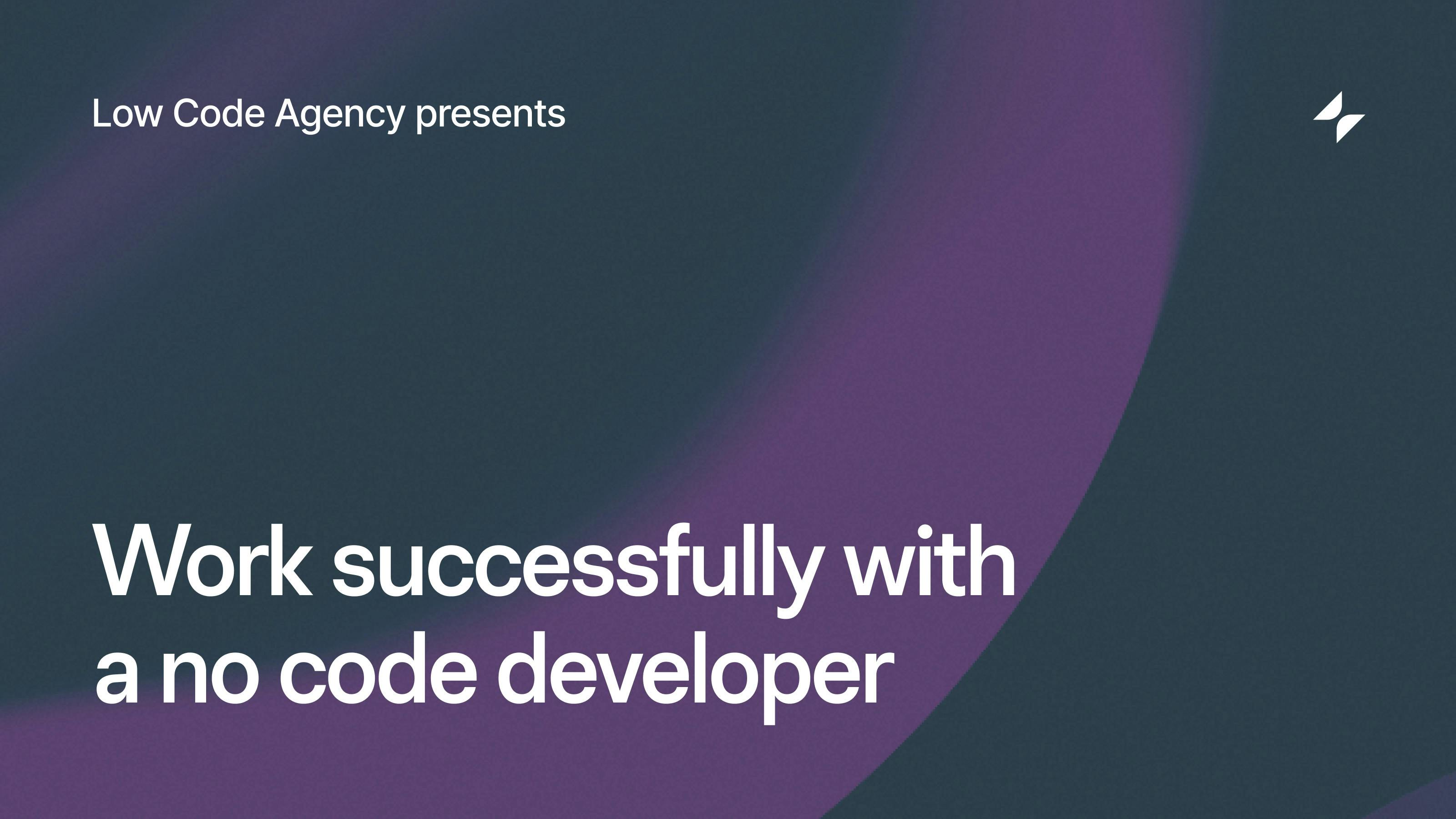Guest Post: LowCode Agency has been building no code solutions since 2015 and has over 300 successful projects under its belt. They are the largest Glide Premium Expert firm out there, trusted by entrepreneurs, SMBs, and industry leaders like Zapier, American Express, Medtronic, and Coca-Cola.
As software developers, we've witnessed countless clients walk into meetings completely unprepared to discuss their project ideas. Unfortunately, a lack of preparation often leads to misunderstandings and unrealistic expectations.
We get it—you're excited about your big idea and eager to start the development process. But taking a step back to properly prepare before that initial meeting with developers can make all the difference between a stressful, disappointing experience and a smooth, successful project.
Over the years, we've learned that those clients who invest time upfront to define their objectives and understand their users' needs tend to have better partnerships with their development teams. And that’s exactly what we want to teach you how to do in this guide. You'll learn how to package up your idea, map out the key details developers need to hear, and finally ask the right questions in your meetings with potential partners.
What are your objectives?
Before getting into the details of your software project, it's important to clearly define the objectives you want to achieve. You need to make sure your project is heading in the right direction and that it will deliver value for your business.
A simple framework to define objectives is:
1. Identify the core purpose:
It may sound obvious, but you must start with the core problem the software needs to solve. Ask yourself - what is the main function or use case for this software? What issue are we ultimately trying to address?
2. Outline the key goals:
Next, make sure you outline the most important goals and desired outcomes for the project. What are the big-picture results you want to achieve? How does this tie into your company's overall strategy?
3. Set specific, measurable objectives:
Now that you have the key goals defined, you can set specific, measurable objectives that will help achieve those outcomes. This is the moment where you should involve stakeholders from different departments. Gather their input, and break down your objectives into specific, quantifiable milestones.
Remember good objectives are:
- Specific and well-defined
- Realistically achievable
- Measurable and quantifiable
Let’s review this with an example:
- Not helpful: "Improve our customer service."
- Helpful: "Implement a new customer relationship management (CRM) system to decrease average response times for support inquiries from 24 hours to under 4 hours within 90 days."
In the helpful goal example, the objectives are specific, measurable (decrease response times from 24 hours to under 4 hours), time-bound (within 90 days), and aligned with improving customer service.
Understand your requirements
In the previous section, we covered the importance of clearly defining your project's objectives. Next, you need to go deeper and discover all the underlying requirements that will shape your custom software solution.

Conduct a business analysis
Your existing processes likely have bottlenecks, redundancies, or areas that could be optimized. A business analysis will help you recognize these pain points and inefficiencies, allowing you to define objectives that directly address them. For example, you may discover that manual data entry across multiple systems is causing delays and errors, so you conclude that you need to implement a centralized data management solution.
In addition to addressing challenges, business analysis can reveal opportunities to enhance your operations or introduce new capabilities that drive growth and competitiveness. This could include identifying the need for automation, integrating disparate systems, or using new technologies to gain a competitive edge.
A full business analysis can be tricky without a dedicated business analyst on staff. Partnering with a no code agency that offers expertise in this initial stage can be invaluable, especially for SMBs. For example, here at LowCode, we dedicate the first two weeks to translating your needs into clear objectives for your custom app project.
Performing a workflow analysis
A workflow analysis is an essential part of understanding your current processes and identifying areas for improvement. Here's a simplified step-by-step guide on how to perform a workflow analysis:
- Choose a process: Start by selecting a specific process or workflow you want to analyze. This could be something like order processing, customer onboarding, or any other core operation.
- Document the current state: With the help of those directly involved (employees, managers, etc.), map out the current process step-by-step. Use simple diagrams, flowcharts, or even sticky notes to visually represent the flow.
- Observe in action: Watch the process unfold in real time. Observe the tasks, handoffs between people/departments, and any bottlenecks or delays that occur.
- Gather insights: Talk to the people involved and get their perspectives. Where do they experience frustrations, redundancies, or excessive manual work? Note their suggestions for improvement.
- Look for inefficiencies: Review the documented process and observations. Identify steps that seem redundant or overly complex. These should be the prime candidates for dedicated software features that can directly resolve inefficiencies by automating tasks, connecting disparate systems, enabling self-service, providing better data and insights, etc.
- Prioritize opportunities: Based on your analysis, determine which areas of the process would benefit most from improvement or optimization. Prioritize the low-hanging fruit and high-impact opportunities.
Define features and functionalities
After conducting a thorough business analysis and identifying your objectives, the next step is to clearly define the features and functionalities your software will require.
Note: not all features and functionalities are equally important or impactful. You need to prioritize the must-have features that directly support your primary objectives over nice-to-have additions. This process is called scoping, and it ensures that you focus on delivering core functionalities first.
Scoping is key. Trying to include too many features from the start can lead to “scope creep,” which happens when too many features are added later, outside of the original plan. This can often result in project delays, budget overruns, and potential failure to meet the initial objectives.
To scope effectively, you need to translate your objectives into tangible requirements. For instance, if your objective is to streamline the order fulfillment process, essential features might include automated order tracking, real-time inventory management, and integration with shipping carriers. Nice-to-haves could be a fancy customer portal or advanced analytics - valuable, but not critical for that initial objective.
It's important to have the mindset that your app will undergo multiple versions and iterations. Think of it as building your app in milestones or deliverable phases. You'll start with version 1.0, which tackles your most pressing needs first. Future versions can then layer in additional functionality based on real user feedback, evolving needs, and nice-to-have extras.
In a milestone-based, iterative approach, you stay focused and don't overload any single phase with too much scope. It keeps the project manageable and adaptable.
Budget planning
We probably don’t need to tell you that developing software can be a significant investment. The best thing you can do is be prepared with a carefully planned budget. Here are some costs you should consider:
Development costs:
- Get estimates from developers on how long the project will take based on the features/complexity.
- Understand the different pricing models (e.g., hourly rates, fixed project costs). Fixed pricing can offer predictability, while hourly rates might be better suited for projects with evolving requirements.
- No code development is more cost-effective than traditional coding, but you have to factor in the pricing of the platform. An expert no code partner will make sure you understand the price tiers and choose the right one.
Ongoing costs:
- Don't forget about long-term maintenance and support. Software needs regular updates, bug fixes, etc. and you may need external support.
- If you anticipate significant user growth, talk to your developer about platform costs to ensure your app can handle increased traffic.
Other potential costs:
- Hosting/servers if not using cloud services
- Any third-party tools, services, or integrations required
- Plan for the unexpected. Allow some buffer room in your budget for any extra costs or changes.
The key is getting realistic estimates upfront and keeping in mind both initial development and ongoing maintenance/support. Remember that, while an investment, the right software will provide efficiency gains and savings over time. But careful budgeting is crucial from the start.
Expert insights

As a leading no-code development agency, we've gained invaluable experience in scoping and planning successful app development projects over the years.
One of the most common mistakes we've seen clients make is underestimating the importance of proper scoping and planning. Many come to us with grand ideas but lack a clear understanding of their objectives, requirements, and even their existing processes. That's why, as we mentioned before, we dedicate the first 2 weeks to a project refinement phase, to make sure we're aligned with your goals.
Another misstep is having too many cooks in the kitchen—or, in this case, too many people involved without a designated leader. We've seen failed projects where there are multiple leads, which means that no one is responsible for making final decisions. With one point of contact, communication with the development team is more efficient and you can avoid misunderstandings.
To get the most out of our partnership and ensure a successful project, developers need your active collaboration and commitment. Here's what we recommend:
Write down your requirements
Start with the basics! The more you write down about what you want in your app, the better. There’s a big difference between explaining your vision in a 30-minute call and having everything documented. Plus, a call leaves things out for interpretation and is harder to review. Written requirements help avoid misunderstandings and ensure everyone's on the same page. Features, user flows, or even some sketches will help everyone understand exactly what you want.
Prioritize and be realistic
We understand the temptation to include every desired feature, but, as we said before, it's crucial to prioritize and be realistic about what you can achieve within your budget and timeline. Let's work together to scope the project appropriately and focus on delivering the essentials first. And be prepared for iterations. Each new version of your app will hit new milestones and will be better than the previous one.
Be open to our expertise
While you know your business best, the developers bring extensive experience. Be open to our recommendations and guidance, as we may suggest approaches or solutions you haven't considered.
Commit time and resources
We love that you trust us and delegate the work, but a successful project still requires your active involvement and commitment of time and resources, especially in the first stages. Keep in mind that during the development process, we'll need you to dedicate key personnel from your team who can:
- Provide subject matter expertise and in-depth knowledge about your business, industry, and requirements.
- Serve as decision-makers and ensure alignment with your organization's goals.
- Collaborate with us, provide timely feedback, and make necessary decisions.
Share examples
If you have examples of apps, websites, or software with user experiences you'd like to emulate or take inspiration from, share those with us! If you don’t, we highly encourage you to do research and find that inspiration.
Finding your development partner
There are a lot of no code developers and Glide Experts out there, so, how can you shortlist your options? Here's a guide on how to do some online research to find important information about the experts you'll be meeting with:
- Portfolio: Dive into their project portfolio to see the types of projects they've worked on. Do they align with the complexity and scale of your application?
- Service pages: Explore their service pages to understand their development process and the specific services they offer. Is their approach a good fit for your needs (e.g., fixed-price projects, hourly billing)?
- Pricing: Look for any mention of pricing models on their service pages or FAQs. While exact quotes might not be readily available, this can give you a general sense of their pricing structure.
- Testimonials: Read client testimonials on their website or other platforms like Clutch. What do past clients say about their experience working with the company? Did they find them transparent and collaborative?
- Company culture: Take a peek at their social media profiles (LinkedIn, Twitter, etc.). How do they present themselves? Does their company culture seem like a good fit for your project and communication style?
- Certified Expertise: Many no code platforms, like Glide, have directories of certified developers. These developers have platform-specific training and a proven track record. Checking these directories can save you time finding reliable partners.
How do I present my project?
You've done the hard work – your project idea is defined, and you've lined up meetings with a few software development experts to explore partnering with them. Now, it's time to present your ideas effectively to find the right team. Here's a small checklist so you have everything prepared:
- Provide a high-level summary of your project, explaining what it is and what problem it aims to solve. Describe the core idea or concept behind the project.
- Clearly state the main objectives and goals you want to achieve with this project. Explain the desired outcomes or the impact you want the software to have.
- List out the essential features and functionalities your software must have. Provide details on any specific technical requirements, integrations, compliance needs, or constraints.
- Mention any existing solutions, competitors, or similar software in the market. Share examples of user experiences, designs, or functionalities you want to take inspiration from.
- Be transparent about your project budget if you have one defined.
We recommend you gather and write down all that info in a document to guide you during the meeting and to share it after if you need to.

What questions to ask the expert?
Defining your project and getting your ideas on paper prepared you to confidently present your vision to potential development partners. But after that, during these meetings, the focus will shift to assessing if they're the right fit for your project. Here are some topics and questions to assess their capabilities:
Project understanding and approach:
- Can you summarize your understanding of our project goals and requirements?
- What development methodology and process would you recommend for this project?
- How do you approach project planning, task estimation, and timeline management?
- What am I not seeing or planning for?
Technical expertise:
- What experience does your team have with the technologies/frameworks required for this project?
- How do you ensure quality, maintainability, and scalability in your solutions?
- What is your approach to testing and performance optimization?
Team structure and communication:
- Who would be the key team members involved, and what are their roles?
- How do you facilitate communication and collaboration with clients during development?
- How do you handle scope changes, roadblocks, or changes in requirements?
Delivery and support:
- Can you walk us through your typical deployment and launch process?
- What kind of post-launch support and maintenance do you provide?
- How do you handle future enhancements, updates, or scaling the application?
The meeting is not just about evaluating their skills and processes; it's also an opportunity for you to see if you can build a productive and collaborative partnership. Look beyond just their technical expertise. Pay attention to how well they communicate, their willingness to gather feedback, and whether their values and working style align with yours.
For example, do they seem genuinely interested in understanding your vision and requirements? Or are they rushing through the meeting, making assumptions, or pushing their own agenda? A good partner will take the time to ask clarifying questions, offer insights, and ensure they understand your goals.
Ultimately, while their portfolio and technical capabilities are important, finding a partner you can establish a strong rapport and open communication with is just as essential as their technical expertise.
With your project defined, you're ready to build a successful partnership
Trust us, taking the time upfront to get clear on your objectives is going to pay off down the road. And think about this, building a custom app doesn't have to be just about digitizing your existing processes — it's a chance to reimagine how your team operates, and it can unlock a lot of growth potential.
We understand that scoping can be challenging. That's why at LowCode Agency we've come up with a process that prioritizes working closely with our clients. Our project managers dedicate time to truly understand their goals, help them scope the project, and define milestones from the outset.
Glide is perfect for the iterative approach we recommend. We can quickly build the first version of your app, then test, refine it, and keep adding features based on your feedback. And of course, we keep clients in the loop throughout the entire process—just like partners should!
In closing, a good development partner will not only execute your requirements but also offer valuable perspectives and solutions you may not have considered. We've been working with Glide for years now and we know the platform inside out, we even use it for some of our internal processes! That's why, when a client comes to us with a project, we're able to offer solutions that not only meet their needs but also exceed their expectations.
Ready to bring your project to life? We’d love to help. Contact us to discuss your project.







